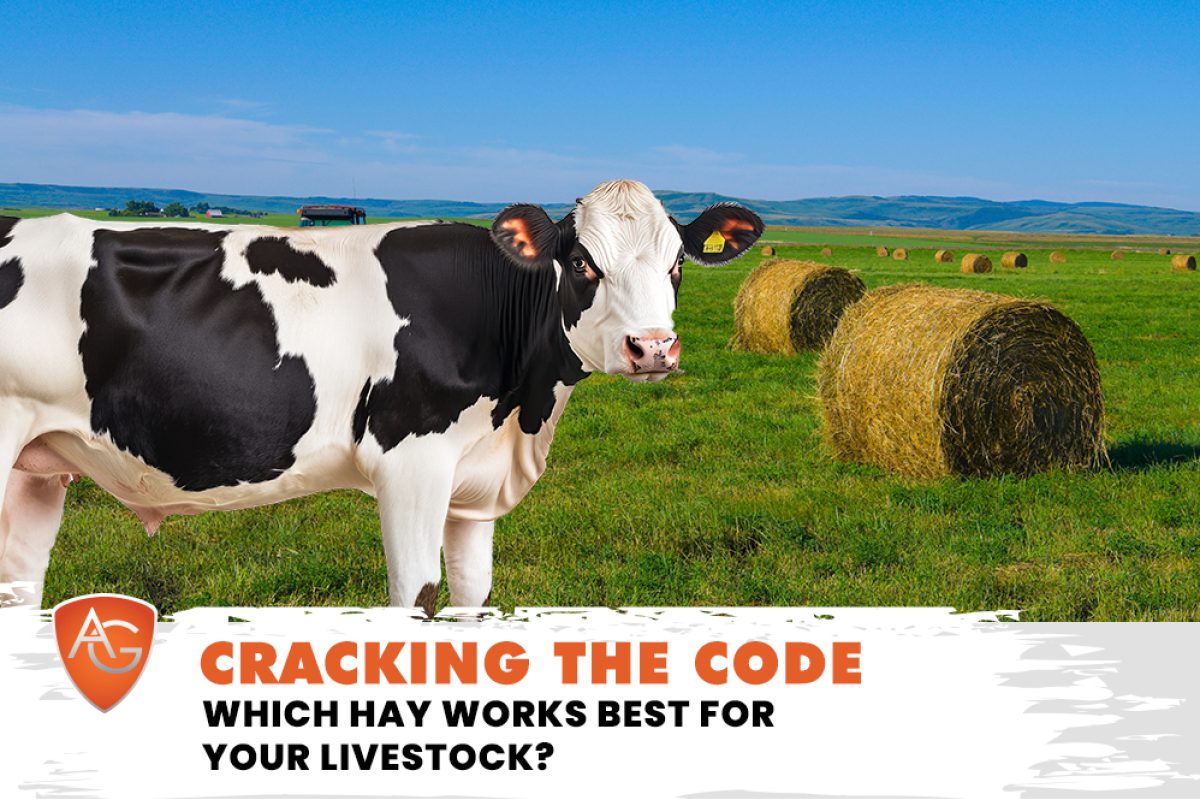Overview: Confused about which hay works best for your livestock? Discover the key to healthy, productive animals with our in-depth guide on hay types, nutritional benefits, and expert tips for selecting the right forage for your herd. Read on!
When it comes to raising healthy livestock, one of the most crucial decisions you’ll make is choosing the right hay. Just like humans need the right balance of nutrients, livestock require quality forage to thrive, whether they’re cattle, sheep, goats, or horses. But with so many options available, how do you know which hay is best for your animals?
Let’s crack the code on hay selection and help you make the best choice for your herd.
The Role of Hay in Livestock Nutrition
Hay isn’t just filler; it’s the foundation of your livestock’s diet. It provides essential fiber, protein, vitamins, and minerals. The right type of hay can promote healthy digestion, improve growth rates, and enhance milk production in dairy animals.
However, not all hay is created equal — nutrient content varies widely depending on the type of plant, harvest timing, and storage conditions.
>> Related Reading: Nutritional value of hay: Reduce your feed supplements cost
Types of Hay and Their Benefits
1. Alfalfa Hay
Alfalfa is a legume hay known for its high protein and calcium content, making it ideal for dairy cows, goats, and growing animals. It’s also rich in energy, which can help support high-performance livestock.
Best for: Dairy cows, pregnant or lactating animals, growing calves, and young goats.
Watch out for: Overfeeding can lead to bloating in ruminants or excess weight gain.
2. Timothy Hay
Timothy hay is a favorite among horse owners because of its balanced nutritional profile and palatability. It’s high in fiber and relatively low in protein and calcium, making it suitable for maintenance diets.
Best for: Horses, mature cattle, and animals prone to obesity.
Watch out for: Ensure it’s cut at the right stage to prevent overly coarse stems.
3. Orchard Grass Hay
This type of grass hay is soft, leafy, and highly palatable. It has moderate protein and energy levels, making it a versatile option for various livestock.
Best for: Horses, sheep, goats, and cattle.
Watch out for: Hay that’s cut too late can become tough and less nutritious.
4. Bermuda Grass Hay
Bermuda grass hay is popular in warmer climates. It’s high in fiber and relatively low in protein, which makes it a great option for animals needing a maintenance diet.
Best for: Mature cattle, horses, and goats.
Watch out for: Overly mature Bermuda hay can be hard to digest and less palatable.
5. Clover Hay
Clover hay, like alfalfa, is a legume and offers a protein-rich option. It can be mixed with grass hay to provide a more balanced diet.
Best for: Growing or lactating livestock and sheep.
Watch out for: Pure clover hay can cause bloating if fed in large amounts.
Factors to Consider When Choosing Hay
Nutritional Needs of Your Livestock: Different animals have varying dietary requirements. Dairy cows and lactating goats need more protein and energy than mature, non-lactating animals. Young, growing animals benefit from high-protein hay like alfalfa, while mature horses and cattle often do well on grass hay.
Hay Quality: High-quality hay is green, leafy, and free from mold or dust. Avoid hay with coarse stems, excessive weeds, or discoloration. Nutrient-rich hay should have a fresh smell and minimal leaf shatter.
Harvest Timing: The stage at which hay is harvested significantly affects its nutrient content. Early-cut hay is generally more nutritious, while late-cut hay may have higher fiber content but lower digestibility.
Storage Conditions Proper storage ensures that hay retains its nutrients. Store hay in a dry, well-ventilated area to prevent mold growth and nutrient loss.
Here’s a reading that might interest you >> How to Choose Hay to Meet Your Horse’s Needs
Mixing It Up: Blending Hay for Balanced Nutrition
Sometimes, a single type of hay isn’t enough to meet all your livestock’s needs. Blending different types of hay can offer a more balanced diet. For example, mixing alfalfa with timothy or orchard grass can provide the right mix of protein and fiber without overloading on nutrients.
Final Thoughts
Selecting the best hay for your livestock involves balancing their nutritional needs with the availability and quality of forage. By understanding the benefits and potential downsides of different hay types, you can ensure your animals get the nourishment they need to stay healthy and productive.
Remember, healthy livestock starts with high-quality hay. Whether you’re feeding a herd of dairy cows or a stable full of horses, making the right choice in forage can make all the difference in their performance and well-being!
